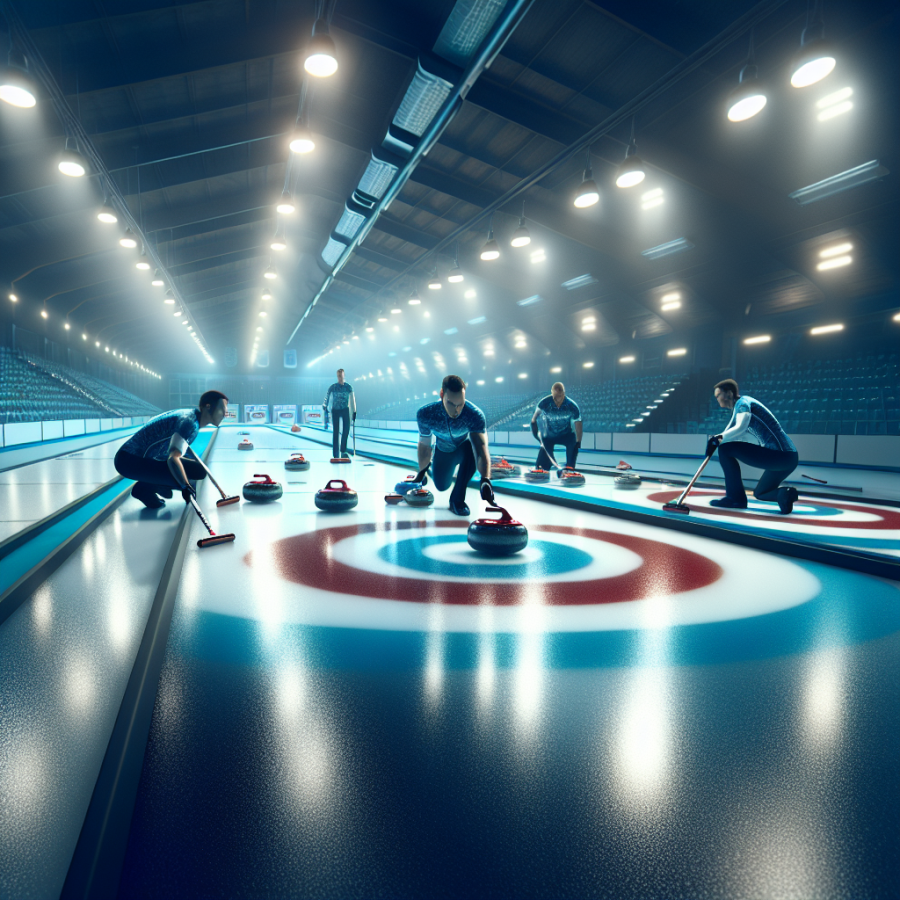Decoding the Complex Tactics Behind Stone Placement
The game of curling, often described as “chess on ice,” involves intricate strategies and tactics that can be both fascinating and perplexing to observers and players alike. One of the central aspects of strategic play in curling is the art of stone placement. This skillful manipulation of the granite stones can determine which team gains the upper hand during the course of a game.
The initial placement of stones often revolves around the center guard strategy, in which teams attempt to place their stones in the center of the house (the target area) behind a guard stone that sits just outside the scoring area. The main purpose here is to protect the stones in the house from being taken out by the opponent while also setting up potential scoring opportunities.
Another strategic option is the corner guard. This involves placing stones towards the corners of the sheet, which can serve a dual purpose. It sets up for a later aggressive play to move behind these guards and score multiple points, or it can draw play away from the center, leaving the critical scoring area open for future ends (the individual rounds of play in a curling game).
Drawing, or placing stones in the house, is a core element of offensive strategy. The goal is to place the stones in such a way that they are difficult for the opposing team to remove and replace. Draws can be placed behind guards or they can be "frozen" to other stones. A freeze is when a stone is placed in direct contact with another stone in the house, making it significantly more difficult to take out without disturbing the surrounding stones.
Raising or tapping is another sophisticated stone placement where a player will hit their own guard stone lightly, moving it towards the center of the house while ideally leaving the delivered stone in the position of the guard just played. It's a delicate shot that requires precision and can greatly alter the dynamics of the house.
Countering the opponent's game is an important defensive aspect of stone placement. This can be done through takeouts, where an opponent’s stone is knocked out of play, or though the careful placement of stones in the way of the opponent’s path (guarding). The right balance between offense and defense can pressure the opposing team into making mistakes or taking risks.
All these strategies can be influenced by the ice conditions on the day of the game. Since the pebbled ice surface causes the curl (lateral movement), understanding the specific curl and adjusting stone placement accordingly is essential.
Read also:
Mastering the Art of HTML Tag Optimization for SEO
Mastering the Art of the Sweep: Maximizing Stone Momentum
In our exploration of curling strategy, one critical element is the utilization of stone momentum, particularly in the execution of the sweep. The sweep is an aspect of curling that significantly influences the distance and direction of the stone, and mastering it can lead to control over the game. Here, we delve deep into the artistry and physics behind sweeping and how expert curlers maximize stone momentum to gain an advantageous position on the ice.
Sweeping alters the state of the ice in front of the moving stone, decreasing friction by slightly melting the ice, which in turn affects how far and how straight the stone travels. The two primary goals of sweeping are to either extend the stone's travel distance or to manipulate its curl, also known as the amount of bend or trajectory the stone takes.
Firstly, the concept of sweepers' pressure is pivotal in dicturing the stone's movement. The pressure applied onto the ice by the sweeper's broom heats the ice surface, creating a minute film of water. This reduces friction and allows the stone to maintain momentum for a greater distance. The force of the sweep is critical; too light, and the effect is negligible, too hard, and the sweeper may tire quickly without additional benefit.
Secondly, the sweeping technique has various approaches. The two sweeper system, a standard among competitive teams, employs one sweeper to manage the stone's speed, and another to control the curl. Communication between the sweepers and the skip is paramount for successful execution. The sweepers must interpret the skip’s directions on when and how aggressively to sweep to influence the stone's path optimally.
Thirdly, the timing of the sweep is a crucial factor. Sweeping too early could lead to the stone over-traveling past the desired target—be it the house or a guard position—while sweeping too late could result in undershooting the target. Curlers must decide when to begin and end their sweep to maximize the stone’s momentum with accuracy.
The path of the stone can also be guided by understanding its rotation or spin. Stones with a clockwise turn require a different sweeping rhythm and pressure from those with counterclockwise turns. The degree of the stone’s curl can be mitigated by adept sweeping, either to straighten the stone's trajectory or to enhance its lateral movement.
The science behind sweeping is complex and requires both physical prowess and strategic insight.




